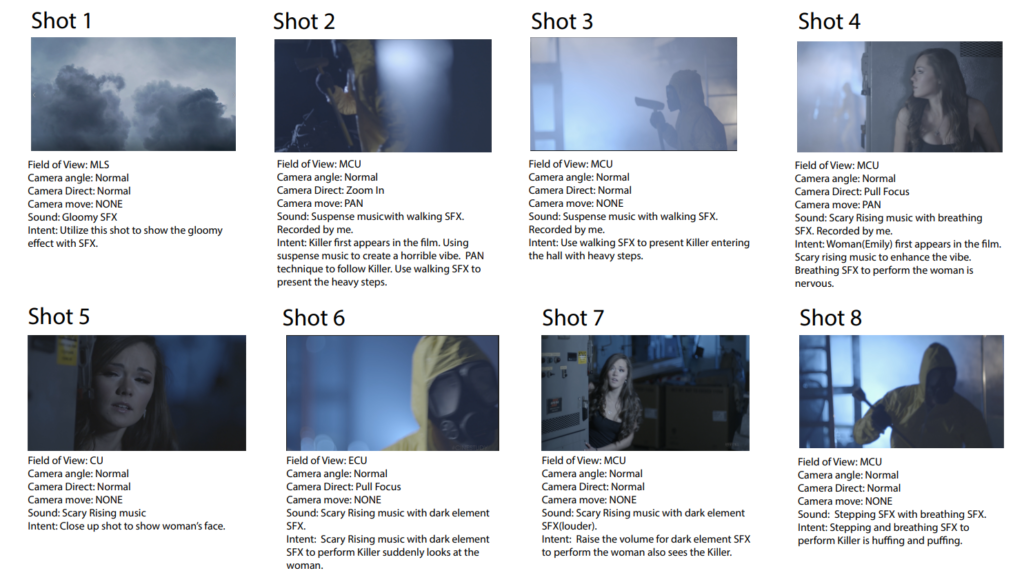Hey friends! Welcome back to the Terrifying Process post; in this episode, I will outline and provide an example of how a storyboard operates in the production of a movie.
The storyboard mainly uses images to illustrate the order and preparations of the film’s shots. As an editor, it is critical for me to comprehend the movie’s aesthetic and tone. The primary responsibility is to properly convey the narrative while maintaining accuracy in how the finished version will pan out. In other words, after viewing my storyboard, someone else should be able to comprehend the plot well. Determine the Field of View, Camera Angle, Camera Direct, Camera Move, Sound, and Intent of each lens are the six necessary components that must be decided beforehand. The storyboard I created for the Terrifying Process is shown below; it demonstrates how to illustrate these six elements while using still images from the video to explain the idea.

As you can see, storyboards help me communicate and express my creative vision to you more clearly, making it easier for you to understand my idea and the impact I am trying to create. I believe each of you has a significant gap in your minds and imaginations if you read the script, which I will introduce in the next post. Therefore, the storyboard has a better expressive capability than the script itself. I can clearly and concisely convey my thoughts to you so you will fully comprehend them. Even though creating this type of storyboard will take a lot of time, in the long run, it will prevent me from having to make multiple revisions throughout production and help me complete the editing process more efficiently.
PLEASE leave any comments about your thoughts or anything else you’d want to share, and I’ll see you in the next post!


